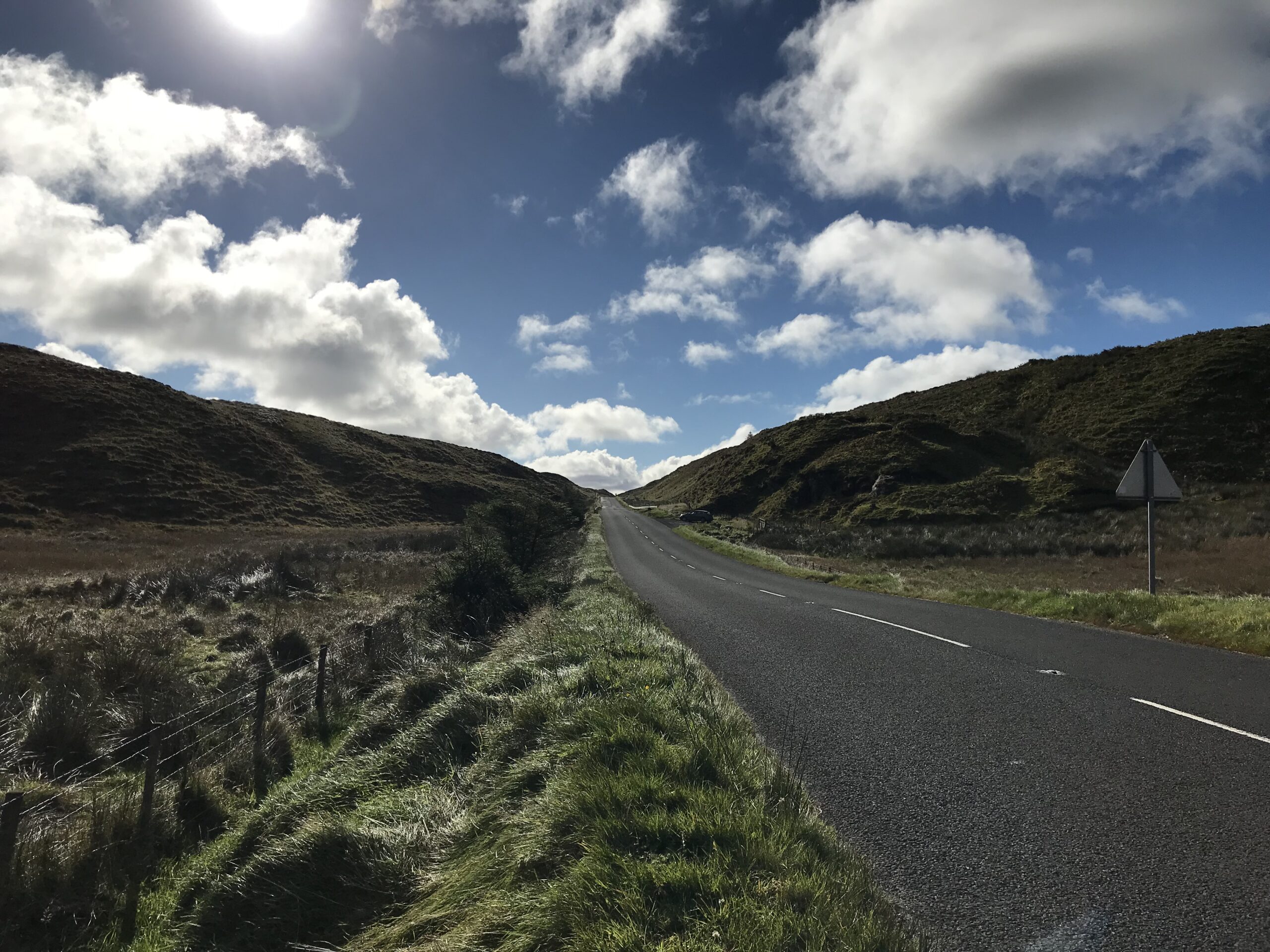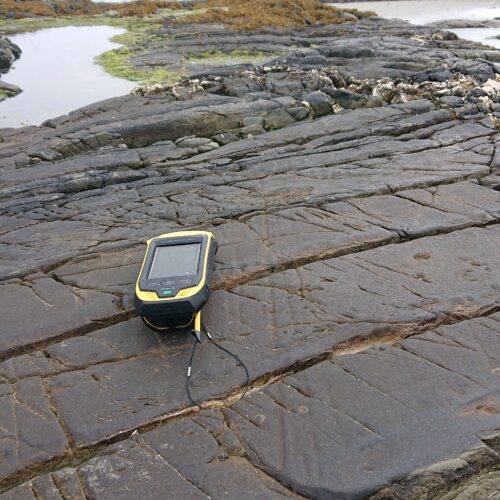The role of the QRA
Climate change during the Quaternary has produced a geological record dominated by landscape modifications and sediments deposited under glacial, periglacial and temperate environmental conditions. Learning from the past has an essential part to play in understanding and dealing with the challenges faced by society today, such as climate change adaptation, loss of biodiversity, sealevel rise and sustainable economic development.
Quaternary science and the benefits it delivers for society and the environment depend on the availability of key sites for research and education. Such sites are an essential component of the UK’s rich and internationally important geodiversity and a key part of its environmental assets, natural capital and rich geoheritage.

Geoconservation is not exclusively the responsibility of the statutory conservation agencies. The professional bodies, their members and the voluntary sector also have a significant role. Members of the QRA have made a major contribution to understanding and conserving Quaternary sites, particularly in the British Isles but also further afield. In particular, they have:
- co-ordinated and advised on the site assessments and written the scientific site reports for the published Quaternary volumes of the Geological Conservation Review (GCR), the benchmark survey initiated by the Nature Conservancy Council (NCC) and continued by the Joint Nature Conservation Committee (JNCC) to identify and protect the key sites representing the geological history of Great Britain;
- advised on the site assessments and written the scientific site reports for the Quaternary block of the Earth Science Conservation Review (ESCR) in Northern Ireland [Earth Science Conservation Review, Northern Ireland], equivalent to the GCR in Great Britain
- provided expert advice for the practical conservation of key sites, including advice on management actions and planning casework;
- defended important sites when threatened (e.g. as a result of development, inappropriate management or stabilisation and coastal protection), including the provision of written scientific evidence in support of the conservation case in relation to planning developments, appearing as expert witnesses at public inquiries and undertaking rescue excavations;
- organised benchmark scientific conferences in partnership with other bodies, advancing our understanding of Quaternary geodiversity;
- promoted awareness of conservation of Quaternary sites and features through interpretation and outreach, including field meetings and contributions to the work of local geoconservation groups.

The QRA’s position on Geoconservation
About the statement
This statement summarises the consensus views of the QRA on the conservation of locally, nationally and internationally important Quaternary sites, landscapes and museum collections, recognising their present and future scientific, educational, cultural, aesthetic, ecological and ecosystem values and the needs of Quaternary science and society.
The QRA supports and delivers geoconservation action and shares best practice through field meetings, conferences, outreach and publications, and through the work of the Conservation Officer.
The QRA:
NOTES that geoconservation is the conservation of those elements of geodiversity that have significant intrinsic, scientific, educational, cultural, aesthetic, ecological and ecosystem service values – our geoheritage;
RECOGNISES that geodiversity is an integral part of nature, and in the same way that plants and animals merit conservation for their intrinsic values, so too do abiotic features; RECOGNISES ALSO that conserving Quaternary sites, landscapes and museum collections of international, national or local significance for science and education (at all levels from schools to life-long learning) is vital for current and future research, developing new techniques and theories, educating and training the scientists of the future, and for historical value (history of science);
NOTES that Quaternary sites include type localities for particular time periods or events; features representative of particular periods of the Earth’s Quaternary history or particular geomorphological processes, or that are unusual or distinctive; sediments, landforms, deposits or fossils indicative of past environmental conditions, such as Quaternary glacial and interglacial phases; classic textbook features and landscapes; or other characteristics that are significant to education, research and society;
ACKNOWLEDGES that culturally significant Quaternary geosites are places where geological features or landscapes played a role in cultural or historical events, or have close links with archaeology, and that aesthetically significant geosites include natural features or landscapes that are visually appealing or, as tourist attractions, provide economic benefits;
ACKNOWLEDGES ALSO that geodiversity is a vital component of ecosystems in which biotic and abiotic components form an interacting system and that most species depend on the abiotic ‘stage’ on which they exist;
RECOGNISES that understanding Quaternary geodiversity and developing Quaternary science supports and underpins landscape and biodiversity conservation and delivers many economic, social and environmental benefits for society, including: informing climate change adaptation and sustainable management of land and water; advancing knowledge about natural hazards and mitigating their impacts; evaluation of past human impacts (e.g. pollution, changes in land use) using palaeoenvironmental archives;
RECOGNISES ALSO the increasing impact of development and other pressures upon Quaternary diversity and geoheritage and that their values are often underestimated or overlooked in national and local planning and policy;
ACKNOWLEDGES, consequently, the need to promote the proper conservation and management of Quaternary geoheritage, and in particular of the sites and landscapes that have high potential for scientific studies, use as outdoor classrooms, enhancing public understanding of science, recreational use, and economic support to local communities.
The QRA therefore:
SUPPORTS geoconservation activities to recognise and protect Quaternary geosites, landscapes and museum collections, recognising their present and future scientific, educational, cultural, aesthetic, ecological and ecosystem values;
ENDORSES the aims and objectives of Scotland’s Geodiversity Charter, the Geodiversity Charter for England and the UK Geodiversity Action Plan (UKGAP);
RECOGNISES AND SUPPORTS the designation and appropriate management of statutory Quaternary geosites for their scientific and educational values and recognises that many have aesthetic or cultural values or offer the potential for supporting local and regional development through (geo)tourism activities;
ENCOURAGES the conservation of local Quaternary geosites and recognition of their management requirements in the preparation of Local Geodiversity Action Plans (LGAPs);
ENCOURAGES collaboration and partnerships to identify, designate and manage local Quaternary geosites to the benefit of the broader community;
SUPPORTS UK participation in UNESCO’s Global Geoparks and World Heritage Site designation of appropriate Quaternary sites;
ENCOURAGES outreach and positive actions to enhance the conservation of Quaternary geodiversity and geoheritage;
ENCOURAGES responsible fieldwork and sample collection that adheres to the Countryside Code, the Scottish Outdoor Access Code, the Geological Society of London’s Code for Geological Fieldwork, the Geological Fieldwork Code of the Geologists’ Association and Natural England’s specimen collecting guidance.
For further information, see:
- Anderson, D.E. & Brown, E.J. (2010). Perspectives on Quaternary outreach and aspirations for the future. Proceedings of the Geologists’ Association, 121, 455 – 467.
- Bridgland, D.R. (2013). Geoconservation of Quaternary sites and interests. Proceedings of the Geologists’ Association, 124, 612-624.
- Brown, E.J., Gordon, J.E., Burek, C.V., Campbell, S. & Bridgland, D.R. (2014). Geoconservation and the Quaternary Research Association. In: Catt, J.A. & Candy, I. (eds), The History of the Quaternary Research Association. Quaternary Research Association, London, 405-431.
- Dempster, M., Enlander, I.J. (2022). Conserving Quaternary Geoheritage in Northern Ireland. Proceedings of the Geologists’ Association, https://doi.org/10.1016/j.pgeola.2022.07.005
